Exploring Sustainable Fabric Dyeing: From Ancient Methods to Cutting-Edge Biotechnologies
Almost all the clothes we wear are made from dyed fabrics, from simple hoodies and jeans to printed T-shirts. Typically, synthetic dyes are used, and the process itself causes significant damage to the environment on many levels. But now more and more environmentally friendly alternatives are available: from the ancient traditional methods to the latest biotechnologies to dye fabrics.
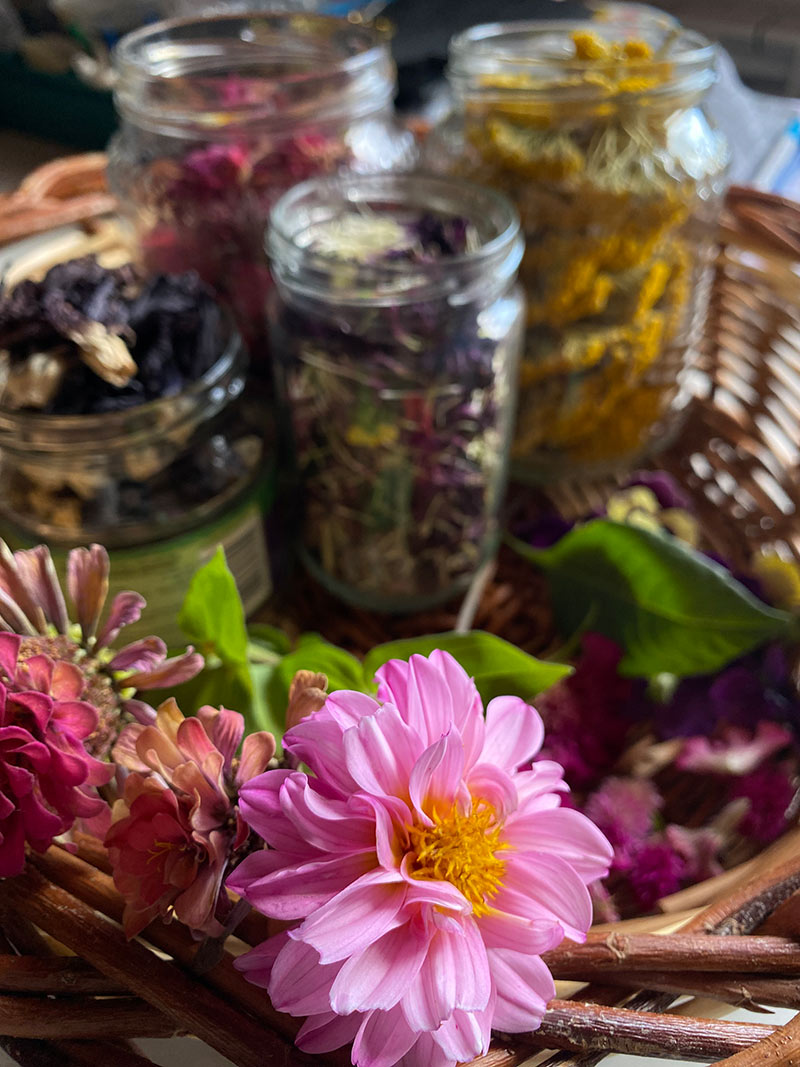
Fabrics have always been dyed: from ancient times, examples of dyed canvases have been preserved, some of which are tens of thousands of years old. Our ancestors used plant, animal and mineral pigments: for example, henna and tree bark, and the most expensive and luxurious was purple, which was extracted from sea snails. But in the middle of the 19th century, people learned to synthesise chemical dyes - and a new and, alas, environmentally sad chapter in the history of fabric dyeing began.
_1708958453.jpg)
Today, the main problem with dyeing is that the process consumes a lot of fresh water (on average, one kilogram of fabric uses 30-60 litres of water, depending on the type of fibre), which means that a huge amount of wastewater is generated, which is very difficult to clean. Dissolved pigments, fixatives and other chemicals from factories end up in nature. Most often, these compounds are poisonous: salts of heavy metals - cadmium, chromium, lead, mercury - are used as paint fixatives. At least half of them end up in the environment in considerable quantities because the molecules are too small to be retained by filters. Once in aquatic ecosystems, heavy metal ions accumulate: their amount increases in the tissues of organisms as they move up the food chain. As a result, they cause the death of animals and deterioration of photosynthesis of aquatic plants. Getting into our diet with water and food, the consequences of staining reduce immunity and lead to the formation of tumours. According to the World Bank, fabric dyeing processes account for up to 20% of all industrial wastewater pollution.
The good news is that dye wastewater treatment methods and alternative methods for dyeing fabrics are being actively developed.
For example, the Bio-Design Lab at the Bartlett School of Architecture has created a modular system of tiles inlaid with algae that can filter toxic chemical dyes and heavy metals out of water.
Called Indus, the tiles are on display in the UK for the first time during the London Design Festival.
Under the theme of Nature/Nurture, they form part of curator Jane Withers' programme for the Brompton Design District, which explores how design can learn from and protect our natural environment.
Indus is designed to be built on site in areas with contaminated water sources, where artisans can pour water over the tiles to purify it.
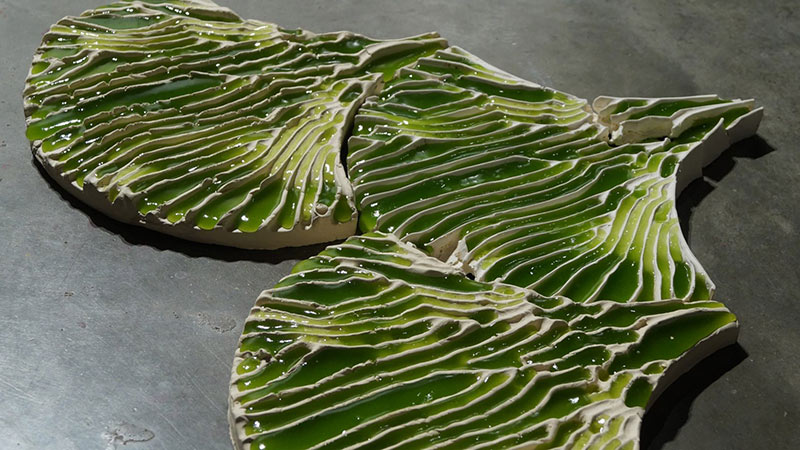
Modular system of tiles with algae (image courtesy dezeen.com)
The most common method of environmentally friendly dyeing remains plant pigments - now these ancient methods are again gaining popularity due to their simplicity and accessibility, as well as due to the large amount of plant waste that is generated in cities. Today, more and more brands are appearing that use natural ingredients for colouring.
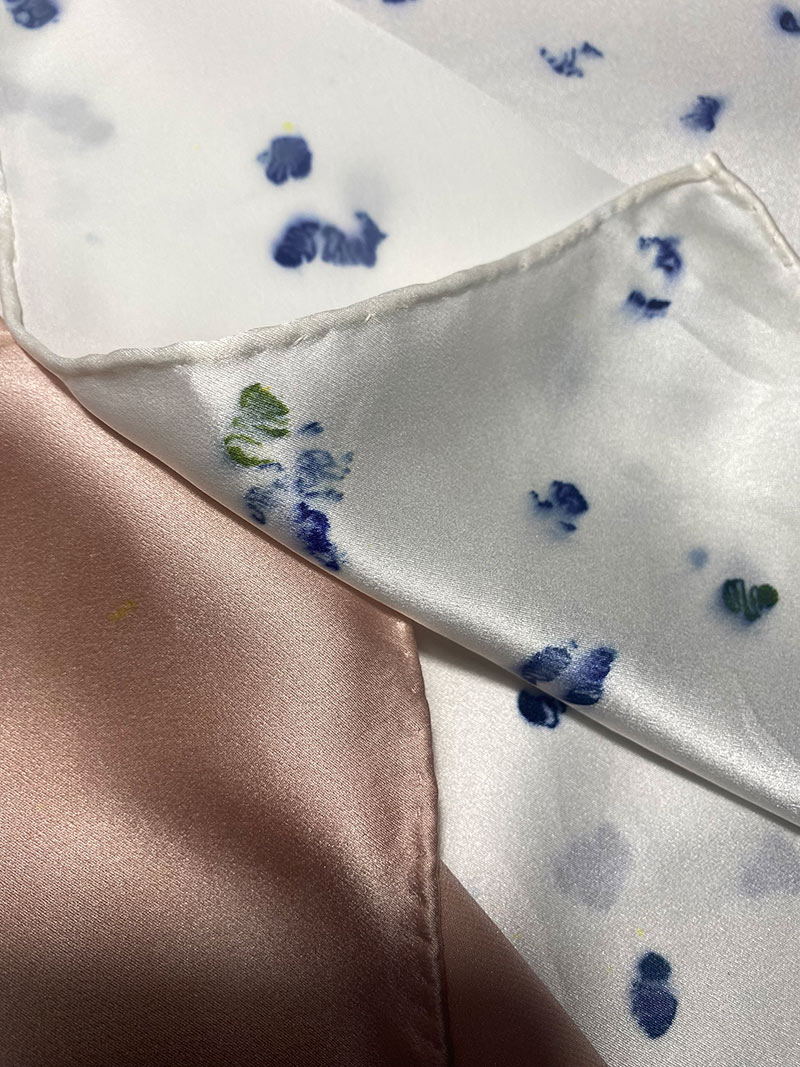
Silk sampels SAH dyed with plant pigments (avocado pips and black beans)
For example
The ‘Buffy’ bed linen brand colours its products using tea, pomegranate, nuts and eucalyptus bark. This type of dyeing is better for the environment, not only in terms of the composition and amount of waste water, but also because of its energy efficiency: the selected vegetable dyes are fixed to the fabric without high heat.
Brookline based line ‘Anthemia’ works mostly with vintage fabrics to reduce the space she takes up, and uses food scraps like avocado pits and onion skins as dyes when she can.
Gender-neutral clothing for the modern-day plant lover ‘Older Brother’ sell limited-edition lines based on the material they have to work with that season to create the same kind of buzz around their clothes that you'd find around the first ripe farmer's market tomatoes of the year. Right now, they're using indigo and saffron, but they've also done colour stories using chaga mushrooms and coffee—all shared in their signature whimsy, tongue-in-cheek marketing campaigns.
You can dye fabrics not only with those plants that grow in the garden and forest. Thus, the Berlin studio Blond and Bieber came up with the Algaemy project, within which it creates a “biodynamic colour palette” using micro-algae. Pigments extracted from algae are used to produce photosensitive patterns on fabrics: they change their hue and intensity in the light. The creators of the Algae Apparel project, which in 2018 reached the finals of the Global Change Award for sustainable development in fashion, also obtain dyes from different algae.
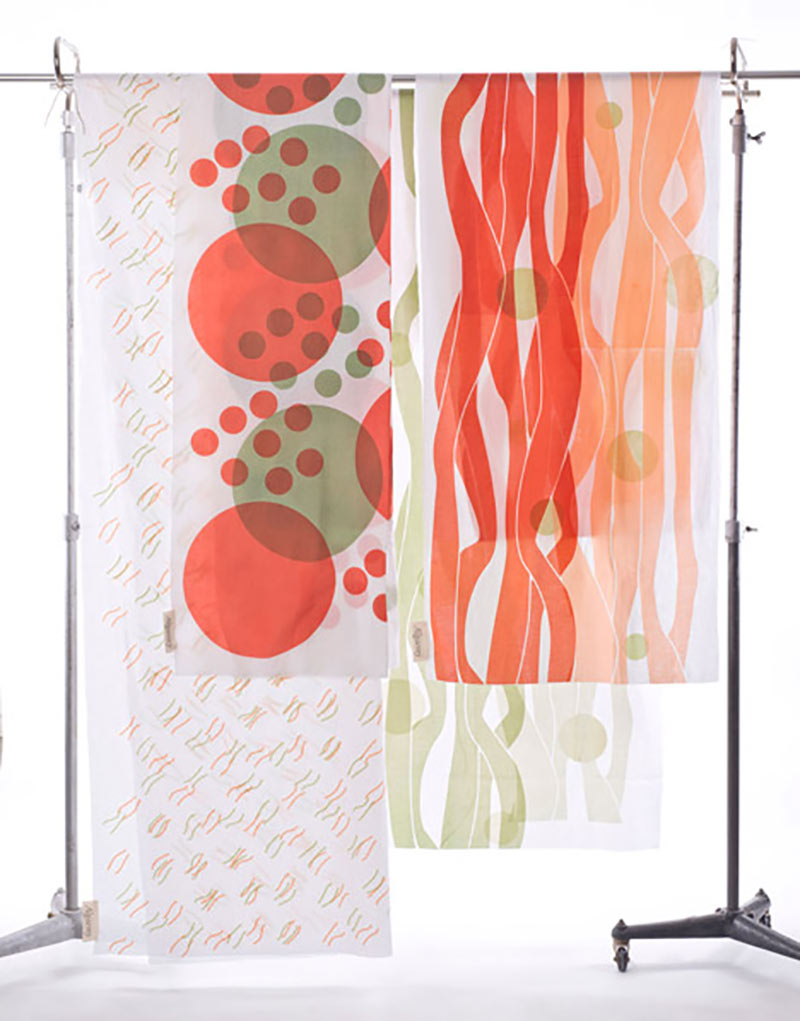
The prints photo sensetive and change tone over time when exposed to sunlight (image courtesy dezeen.com)
Fabric pigments are also obtained from mushrooms. A striking example: the Mush-Hues project of the New York design studio Circular Union - liquid dyes obtained from the fermentation of different types of mushrooms. The creators managed to extract a wide color palette: 50 different shades from pale yellow to purple. The paints are suitable for textiles and wood.
All the methods that were described above involve the process of pigment extraction. But what if the dyes are not isolated, but produced immediately? This is precisely the path taken by the scientists who created the biotech startup Colorifix: they isolated the genes of different organisms responsible for the production of pigments (for example, those that allow birds to have multi-coloured plumage, and butterflies to have patterns on their wings), and introduced them into the genome of bacteria so that they produced coloured proteins. If fabric is placed in a nutrient medium with a colony of such bacteria, it will become coloured, after which the colour can be easily fixed by heat treatment. “Many fashion designers say they take inspiration from nature for their collections. Our technology literally recreates nature in them,” says Dr. David Nugent, co-founder of Colorifix.
Similar biotechnologies have enabled CSIRO to grow coloured cotton fibres. This is not a harvest from plants in the fields, but cotton grown in a petri dish on a nutrient medium from plant cells - they also added a gene responsible for the production of pigment, and the cotton fibres initially had red and yellow colours. So far, this technology is in the early stages of development, but scientists hope that they will be able to create plants that produce coloured crops - then there will be no need for dyeing fabrics.
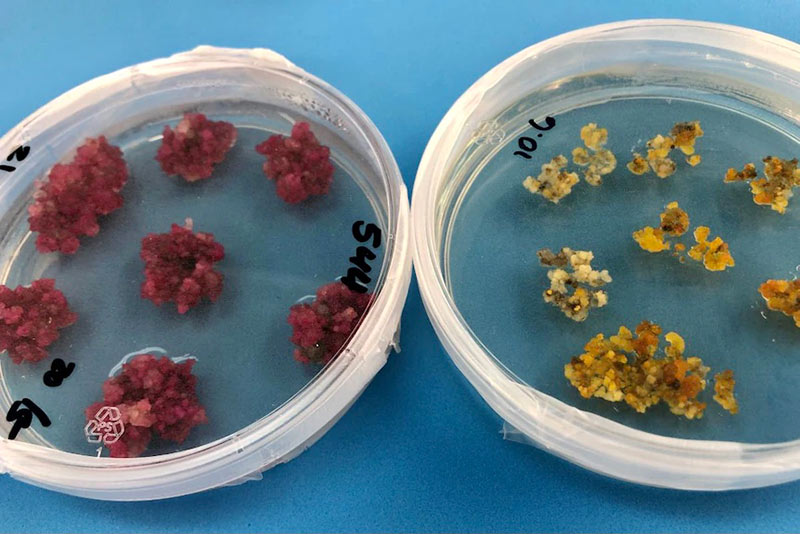
Colored cotton plant tissue will soon groww into the plant (image courtesy ABC landline: Tim Lee)
Plants, fungi and bacteria produce pigments that colour fabrics in different colours, but what about prints, which are usually done with ink or printing? Printing does not leave as large an environmental footprint as dyeing: it is usually a technology that does not require water and does not create toxic runoff, but an eco-friendly solution can be found here. Pangaia, a brand that strives to innovate as sustainably as possible in its clothing, has teamed up with Graviky Lab to come up with an elegant solution for printing on hoodies and T-shirts: using water-based ink, the pigment part of which is air polluting particles.
To create Air-Ink, PM 2.5, fine carbon particles that are harmful to health and contribute to global warming, is precipitated from the air. Essentially, it's the soot released into the air when fossil fuels burn: anyone who lives near a busy street probably wipes a layer of it off their windows and sills on a regular basis. The air was filtered, the particles were cleared of toxins, concentrated and dissolved in water - every kilogram of such ink ultimately reduces carbon emissions into the atmosphere by 800 grams. Their production technology is open for use - Pangaia wants the fashion industry to switch to environmentally friendly alternatives to conventional processes.
So far, most alternative dyeing methods are experimental and labor-intensive, but this will be resolved over time - after all, for example, the use of recycled materials in clothing has also recently been innovative, and now leading fashion brands are working with them. In the near future, we will increasingly see “naturally dyed” signs in stores, and the growth of biotechnology will gradually displace toxic dyeing processes. In the meantime, anyone can give a second life to an old T-shirt by re-dying it in their own kitchen - both environmentally friendly and fun!
I hope you found this piece informative, now that you are here lets stay connected.
Source information with gratitude from
dezeen.com/2019/09/21/bio-id-lab-indus-algae-tiles-water/
ecosphere.press/2021/05/25/palitra-bez-toksinov-pochemu-modnye-brendy-perehodyat-s-himicheskih-krasitelej-na-bakterii-i-sazhu/
dezeen.com/2014/10/14/blond-and-bieber-algaemy-coloured-dye-algae-lodz-design-festival-2014/
abc.net.au/news/2020-06-27/csiro-scientists-grow-coloured-cotton/12395250